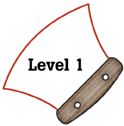
Alaska Science
Key Element A14b
A student who meets the content standard should understand that the living environment consists of individuals, populations, and communities (Interdependence).
 |
Alaska Science A student who meets the content standard should understand that the living environment consists of individuals, populations, and communities (Interdependence). |
|
Performance Standard Level 1, Ages 5–7
|
|
|
|
Sample Assessment Ideas
|
|
|
Expanded Sample Assessment Idea
|
|
Procedure Students will:
Reflection and Revision
|
Levels of Performance |
||
|
Stage 4 |
Student collects multiple animal pictures, and correctly identifies the animals and different group types. | ||
|
Stage 3
|
Student collects multiple animal pictures and correctly identifies most of the animals. | ||
|
Stage 2
|
Student may collect multiple animal pictures but correctly identifies only one or two animals. | ||
|
Stage 1
|
Student may collect an animal picture and identify it. | ||
Standards Cross-References
|
||
|
National Science Education Standards Human populations include groups of individuals living in a particular location. One important characteristic of a human population is the population density-the number of individuals of a particular population that lives in a given amount of space. (Page 140) The size of a human population can increase or decrease. Populations will increase unless other factors such a disease or famine decreases the population. (Page 140) |
Benchmarks Animals eat plants or other animals for food and may also use plants (or even other animals) for shelter and nesting. (Page 116) Living things are found almost everywhere in the world. There are somewhat different kinds in different places. (Page 116) |
|
Table of Contents | Return to Alaska Native Knowledge Network